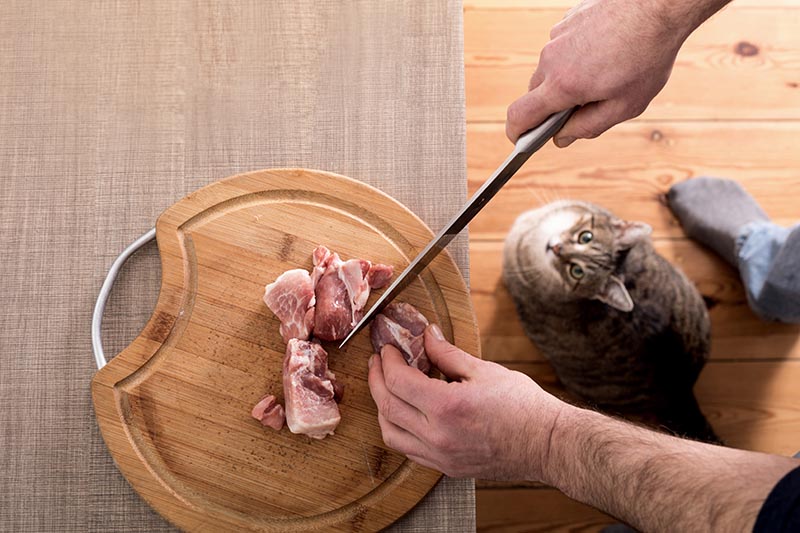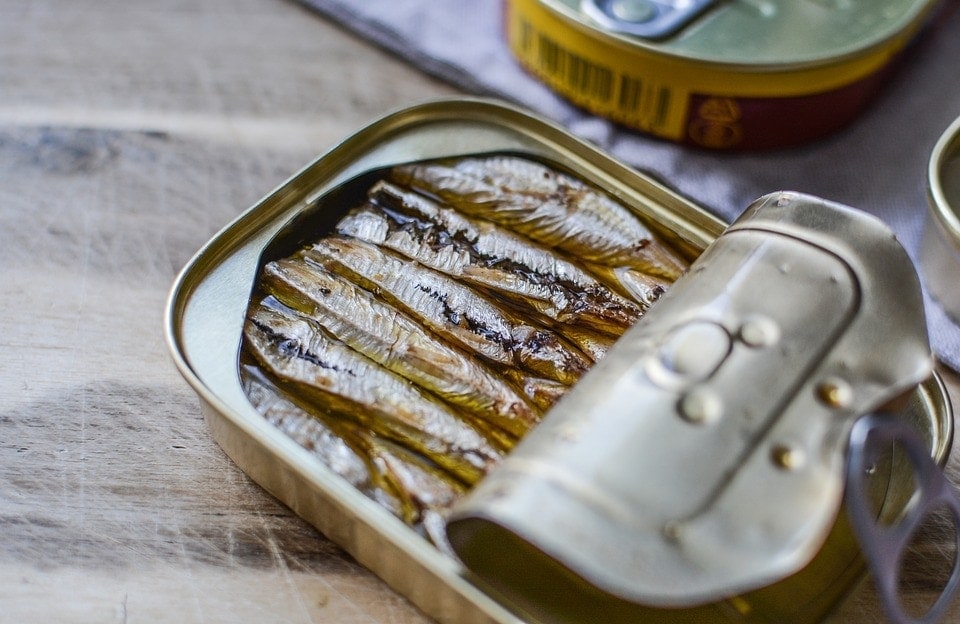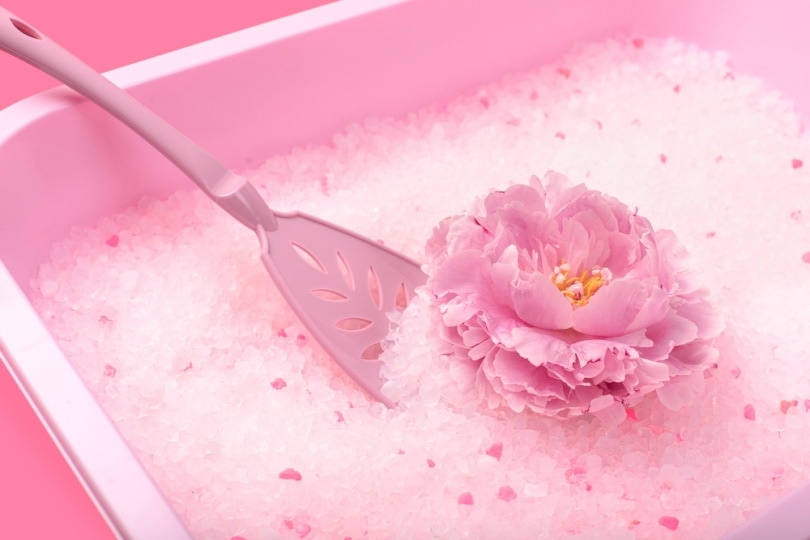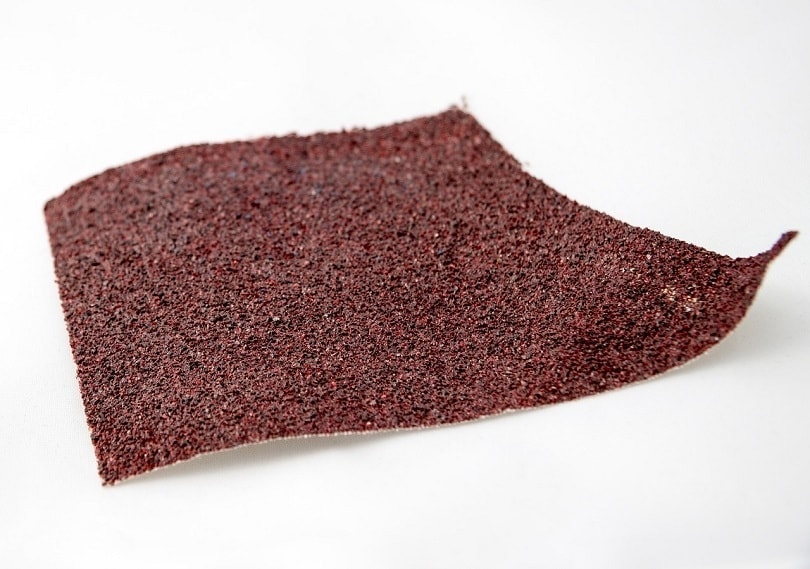Can Cats Eat Pizza? 6 Vet-Reviewed Alternatives

Updated on

Maybe your cat got into some pizza when you weren’t looking, or perhaps you can’t help yourself with those pleading eyes. Either way, you need to know if your cat can eat pizza, and if so, how much?
Before we dive into the nitty-gritty details, we wanted to give you a quick answer upfront. In short, while your cat should be fine if they get a slice of pizza, it’s full of so many harmful ingredients that you don’t want to give it to them regularly.
Fortunately, there are plenty of treats you can give your cat instead to avoid feeling guilty when you look at those pleading eyes!
Can Cats Eat Pizza?
While your cat might not die if they got a try at your pizza, that doesn’t mean you should make it a dietary staple. Pizza isn’t all that good for humans, either, but some of the ingredients in pizza that are safe for humans are toxic for cats.
Pizza is high in carbohydrates, high in fats, and relatively low in protein. It might also contain onion and garlic, which are toxic to cats and are therefore detrimental to their health. So, you don’t want to give your cat any pizza at all. While your much larger body can handle a slice or two with ease, those same quantities can be dangerous for your cat.
Can Cats Eat Cheese?
Most cats can eat small quantities of cheese, but it’s generally a food you want to avoid entirely. That’s because adult cats can’t break down the lactose in cheese, and even small amounts can lead to disruptions to their digestive health.
Cats are obligate carnivores, which means they need to eat meat to survive. And while cheese has many of the same nutrients as meat, they simply can’t digest it properly!
Can Cats Eat Pizza Sauce?

Ripe tomatoes, sugar, and spices, such as garlic and onion, are used to prepare pizza sauce. Therefore, it is not recommended to feed pizza, pasta, or any food including tomato sauce to your cat. While it is safe for humans to consume, some of these ingredients are toxic to cats. For instance, onion and garlic can result in digestive distress and, if consumed in large amounts, even in the destruction of their red blood cells.
Can Cats Eat Toppings?
The short answer is probably not. Onions and garlic—two common pizza toppings—are toxic to cats. Pepperoni and sausage are loaded with fat. Of course, with so many pizza toppings to choose from, you should always double-check that each topping is safe for your cat before giving them any. It’s generally a good idea to avoid them altogether!
The 5 Safe Alternatives to Feed Your Cat
We know it can be hard to resist your cat when they start begging for food. But just because they can’t have pizza doesn’t mean they can’t eat anything when you order a pie. Below are five safe treats you can give your cat that they’ll love.
1. Fish
Cat and fish go together like peanut butter and jelly, so it’s no surprise that you can give them some fresh fish as a treat. However, when you’re preparing the fish, you want to avoid all seasonings and oils. Because while the fish is safe for your cat, the toppings aren’t.
Always ensure you properly prepare the fish before feeding it to your cat. Baked, boiled, or smoked fish are some great options. Be especially careful to remove all bones!
2. Meat

Cats are obligate carnivores, and as such, the best treat option you can provide for them is meat. Beef, chicken, and turkey all make great choices, but when it comes to meat, cats aren’t all that picky. Just like with fish you need to avoid all seasonings and other additives on the meat. Instead, simply cooking it bland, baked, grilled, or boiled are the healthiest options. Remember to keep the portions small, as your cat does not need a ton of extra calories.
3. Eggs
Eggs are another great alternative to provide a nutritious treat for your cat. Plain-boiled, poached, or scrambled are great ways to serve eggs to your cat.
4. Sradines

Canned sardines are the perfect easy-to-go treat alternative for your cat. They are a source of protein and omega-3 oils. Just look for options that are preserved in water rather than in oil.
5. Carrots
Not every cat likes carrots, but if you can get your cat to eat some veggies, that’s never a bad thing. You can try giving your cat raw, shredded carrots, or you can try steaming them. Avoid any extra toppings, like honey or sugar. Carrots, while included in some cat food recipes, are not something that your cat really needs, so if they do not enjoy them, do not push them. And if they do like them, remember to offer only small portions as occasional treats.
6. Melons
If your cat won’t touch carrots there’s a chance they’ll enjoy some pieces of melon. Melons are extremely sweet, but cats can’t taste sweetness. If your cat is interested in melon, it might be for the water content. Still, melons, like other fruits, are high in carbohydrates, so you shouldn’t let your cat have too much—just the occasional piece as a special treat.
Conclusion
While your cat can’t have any pizza, that doesn’t mean you can’t give them other delicious treats to chow down on! But while you shouldn’t feed pizza to your cat, there’s usually no reason to panic if they eat a small piece.
Keep an eye on them and give a call to your vet if they start showing any signs of gastrointestinal distress. And in the meantime, find a way to keep them out of your pizza next time!
Featured Image Credit: ponce_photography, Pixabay














